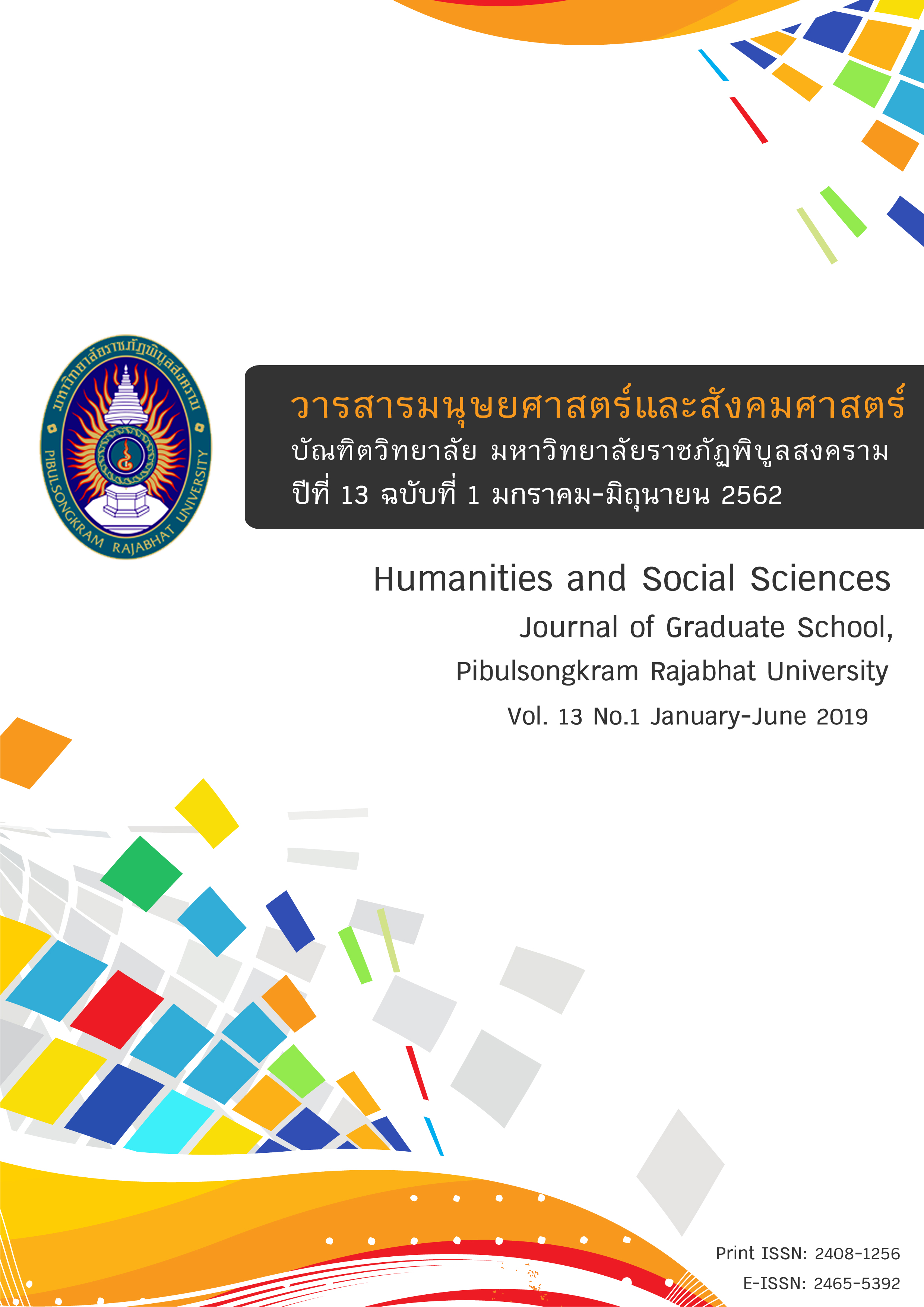Mobile Marketing Strategy and Firm Performance: An Empirical Study of E-Commerce Business in Thailand
Keywords:
Mobile marketing strategy, Social media engagement awareness, Personalized advertising flexibility focusAbstract
Incontestably, mobile marketing has come to a higher degree of popularity in the digital world. Currently, most businesses have been utilizing any smart device platforms for mobile marketing in their strategy. Yet, in this sense it still has to be explored concerning how mobile marketing strategy affects firm performance. Therefore, this paper aims at investigating the relationship between dimension of mobile marketing strategy (MMS) and business outcomes. The questionnaires of 39 e-commerce firms in Thailand were collected. Regression analysis was employed to verify the hypotheses. The evidence highlights that technology integration management orientation has the strongest positive significance for all business outcomes. Both customer service effectiveness and marketing competitive advantage are significantly positive to firm performance. The finding not only provides contributions but also recommendation for future research.
References
Armstrong, J. S., & Overton, T. S. (1977). Estimating nonresponse bias in mail surveys. Journal of Marketing Research, 14(3), 396-402.
Constantinides, E. (2014). Influencing the online consumer’s behavior: The web experience. Internet Research, 14(2), 111–126.
DBD. (2016). Department of Business Development and Trustmark Thai Statistic. Retrieved March 3, 2016, from https://is.gd/aPdvAb
Durbin, J., & Watson, G. S. (1971). Testing for serial correlation in least squares regression III. Biometrika, 58(1), 1–19.
Electronic Transactions Development Agency. (2015). Value of E-Commerce Survey in Thailand 2015. Retrived March 20, 2017, form https://is.gd/Ho73mS
Eng, T. Y. (2008). E-customer service capability and value creation. The Service Industries Journal, 28(9), 1293–1306.
Fotopoulos, C., & Krystallis A. (2003). Quality labels as a marketing advantage: The case of the “PDO Zagora” apples in the Greek market. European Journal of Marketing, 37(10), 1350-1374.
Hair, Jr. J. F., Black, W. C., Babin, B. J., & Anderson, R. E. (2010). Multivariate data analysis: A Global Perspective (7th ed.). New Jersey: Pearson Education.
He, W., & Nie, M. (2008). The Impact of Innovation and Competitive Intensity on Positional Advantage and Firm Performance. The Journal of American Academy of Business, 14(1), 205-209.
Hutter, K., Hautz, J., Dennhardt, S., & Füller, J. (2013). The impact of user interactions in social media on brand awareness and purchase intention: the case of MINI on Facebook. Journal of Product & Brand Management, 22(5/6), 342-351.
Jain, V., Pant, S., & Daswani, A. (2011). Mobile Marketing: The Emerging Indian Perspective. Mobile Marketing Association, 6(2), 17–27.
Jumpapong, M., & Ussahawanitchakit, P. (2012). Marketing Learning Orientation, Service Innovation, Customer Value Creation and Marketing Profitability: An Empirical Study of Hotel Businesses in Thailand. International Journal of Buesiness Research, 12(4), 1–21.
Kouziokas, G. N. (2016). Technology-based management of environmental organizations using an Environmental Management Information System (EMIS): Design and development. Environmental Technology & Innovation, 5, 106–116.
Lee, G-G., & Lin, H-F. (2005). Customer perceptions of e-service quality in online shopping, International Journal of Retail and Distribution Management, 3(2), 161-176.
Leppäniemi, M., & Karjaluoto, H. (2008). Mobile marketing: from marketing strategy to mobile marketing campaign implementation. International Journal of Mobile Marketing, 3(1), 50–62.
Malhotra, N. K. (2004). Marketing Research: An Applied Orientation (4th ed.). New Jersey: Pearson Education.
Merisavo, M., Vesanen, J., Arponen, A., & Kajalo, S. (2006). The effectiveness of targeted mobile advertising in selling mobile services: an empirical study. International Journal of Mobile Communications, 4(2), 119–127.
MMA. (2008). Mobile Marketing Industry Glossary. Retrieved January 14, 2010, from http://mmaglobal.com/uploads/glossary.pdf
Muk, A. (2007). Cultural influences on the adoption of SMS advertising:Astudy of Amer- ican and Taiwanese consumers. Journal of Targeting, Measurement and Analysis for Marketing, 16, 39–47.
Nunnally, J. C., & Bernstein, I. H. (1994). Psychometric Theory (3rd ed.). New York: McGraw-Hill.
Omoyza, I., & Agwu, E. (2016). Effectiveness of Social Media Networks as a Strategic Tool for Organizational Marketing Management. Journal of Internet Banking and Commerce, 21(2), 1–19.
Patino, A., Pitta, D. A., & Quinones, R. (2012). Marketing developments Social media’ s emerging importance in market research. Journal of Consumer Marketing, 29(3), 233–237.
Pelau, C., & Zegreanu, P. (2010). Mobile Marketing–The Markerting For The Next Generation. Management & Marketing, 5(2), 101–116.
Persaud, A., & Azhar, I. (2012). Innovative mobile marketing via smartphones: are consumers ready? Marketing Intelligence and Planning, 30(4), 418–443.
Ramanathan, R., Ramanathan, U., & Hsiao, H. L. (2012). The impact of e-commerce on Taiwanese SMEs: Marketing and operations effects. International Journal of Production Economics. 140(2), 934–943.
Shadkam, M., & O’Hara, V. (2013). Social commerce dimensions: The potential leverage for marketers. Journal of Internet Banking and Commerce, 18(1), 1-15.
Shankar, V., & Balasubramanian, S. (2009). Mobile Marketing: A Synthesis and Prognosis. Journal of Interactive Marketing, 23(2), 118–129.
Shankar, V., Venkatesh, A., Hofacker, C., & Naik, P. (2010). Mobile Marketing in the Retailing Environment: Current Insights and Future Research Avenues. Journal of Interactive Marketing, 24(2), 111–120.
Smutkupt, P., Krairit, D., & Esichaikul, V. (2010). Mobile Marketing: Implications for Marketing Strategies. Mobile Marketing Association, 5(2), 126–139.
Syryamkin, V. I., & Syryamkina, E. G. (2015). Technology Management as a Tool of Innovative Strategy of Education and Cognitive Management. Procedia - Social and Behavioral Sciences, 166, 468–471.
Teece, D. J., Pisano, G., & Shuen, A. M. Y. (2007). Explicating dynamic capabilities: The nature and microfoundations of (sustainable) enterprise performance. Strategic Management Journal, 28(13), 1319–1350.
Ussahawanitchakit, P. (2012). Knowledge Acquisition, Technology Acceptance, Information Richness, and Competitive Advantage of E-Commerce Businesses in Thailand. International Journal of Business Strategy, 12(1), 56–65.
Watson, C., McCarthy, J., & Rowley, J. (2013). Consumer attitudes towards mobile marketing in the smart phone era. International Journal of Information Management, 33(5), 840–849.
Watson, H. J., Wixom, B. H., Hoffer, J. A., Anderson-Lehman, R., & Reynolds, A. M. (2006). Real-Time Business Intelligence: Best Practices at Continental Airlines. Information Systems Management, 23(1), 7-18.
Wei, Y., & Wang, Q. (2011). Making Sense of a Market Information System for Superior Performance: The Roles of Organizational Responsiveness and Innovation Strategy. Industrial Marketing Management, 40, 267-277.
We Are Social Report. (2016). Specail Report in Digital 2016. Retrieved January 16, 2017, from https://wearesocial.com/uk/special-reports/digital-in-2016
Wolin L. D., & Korgaonkar P. (2005). Web Advertising: Gender Differences in Beliefs, Attitudes and Behaviour. Internet Research, 13(5), 375-385.
Wu, F., Mahajan, V., & Balasubramanian, S. (2003). An Analysis of E-Business Adoption and Its Impact on Business Performance. Journal of the Academy of Marketing Science, 31(4), 425–447.
Yuan, Y., & Zhang, J. J. (2003). Towards an appropriate business model for m- commerce. International Journal of Mobile Communications, 1(1–2), 35–46.
Zegreanu, P. (2012). Mobile Marketing Strategies for Permission-based Communication: Insights into the consumer behavior of Romanian users. Contemporary Marketing Review, 2(5), 1–10.
Downloads
Published
How to Cite
Issue
Section
License
บทความหรือข้อคิดเห็นใดใดที่ปรากฏในวารสารมนุษยศาสตร์และสังคมศาสตร์ มหาวิทยาลัยราชภัฏพิบูลสงครามเป็นวรรณกรรมของผู้เขียน ซึ่งบรรณาธิการไม่จำเป็นต้องเห็นด้วย บทความที่ได้รับการตีพิมพ์เป็นลิขสิทธิ์ของวารสารมนุษยศาสตร์และสังคมศาสตร์ มหาวิทยาลัยราชภัฏพิบูลสงคราม







